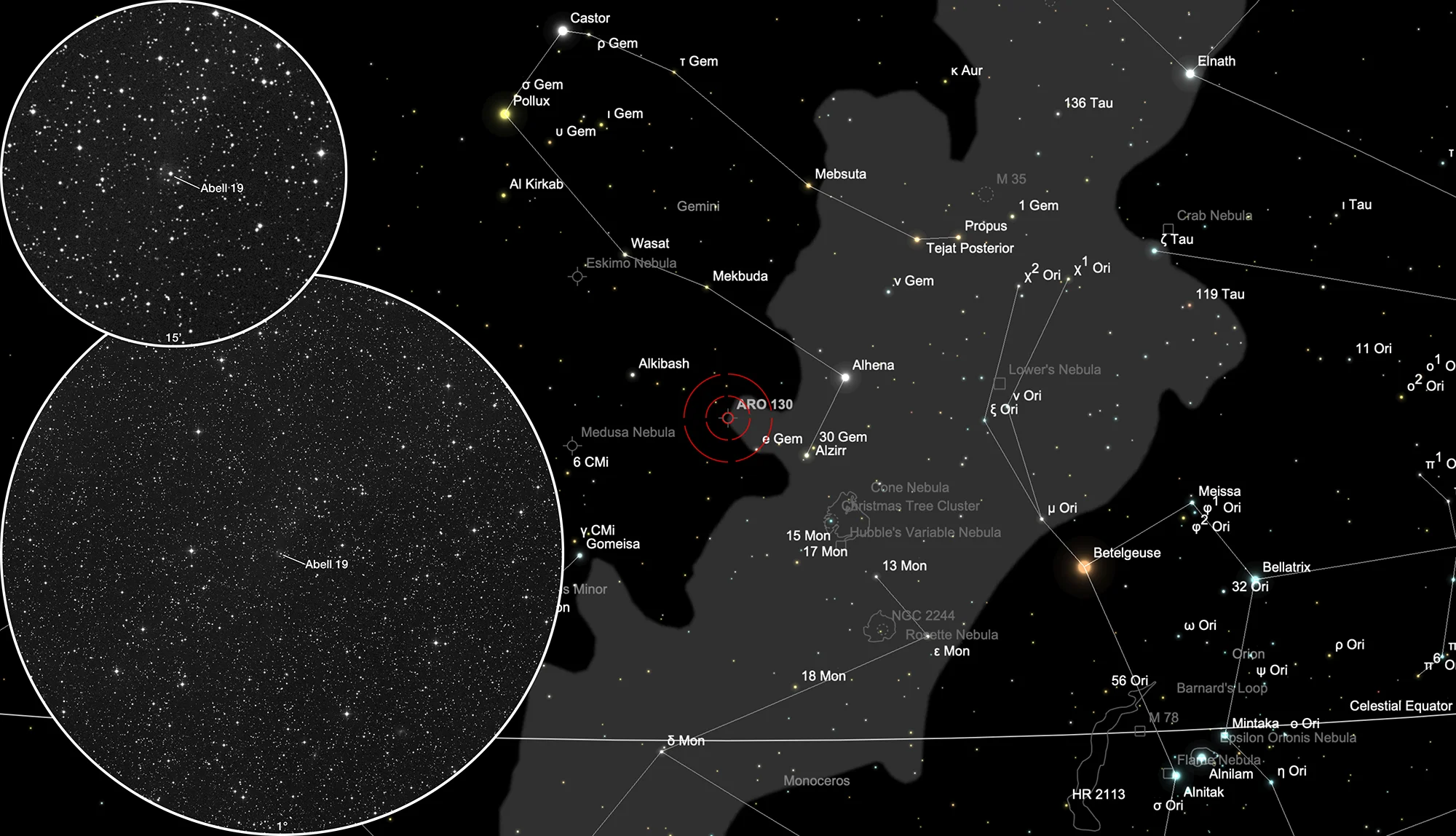Planetary Nebula Abell 19

History
This planetary nebula was discovered in 1955 by the American astronomer George Ogden Abell on the photo plates of the «Palomar Observatory Sky Survey» (POSS). In 1955 he published a first list of 13 globular clusters and the positions of 73 planetary nebulae. The PN had the number 19 (A55 14). In 1966 Abell published a complete list including the size and description of the 86 planetary nebulae discovered on the POSS photo plates. This planetary nebula was then number 19 on his list. [331, 332]
The designation PK 200+08.1 comes from the two Czechoslovak astronomers Luboš Perek and Luboš Kohoutek, who in 1967 compiled a catalog of all the planetary nebulae of the Milky Way known at that time. [146]
The lesser known designation ARO 130 originates from 1971 survey of microwave radiation from planetary nebulae conducted by Canadian radioastronomer Lloyd A. Higgs using the 46-metre Algonquin Radio Observatory in Ontario, Canada. [136, 137]
Physical Properties
Abell 19 is an old and very faint planetary nebula. The distance to Earth is 2310 pc. [145]
| Designations | PN G200.7+08.4: A 19, PK 200+08.1, A55 14, ARO 130, VV' 51 |
| Right Ascension (J2000.0) | 06h 59m 57s |
| Declination (J2000.0) | +14° 36' 47" |
| Dimensions | 67." (optical) |
| Discoverer | ABELL 1955 |
Finder Chart
This planetary nebula can be found in the constellation Gemini. On 5 January it is in opposition to the Sun and crosses the meridian at local midnight. It is highest in the sky from the months September to June.
